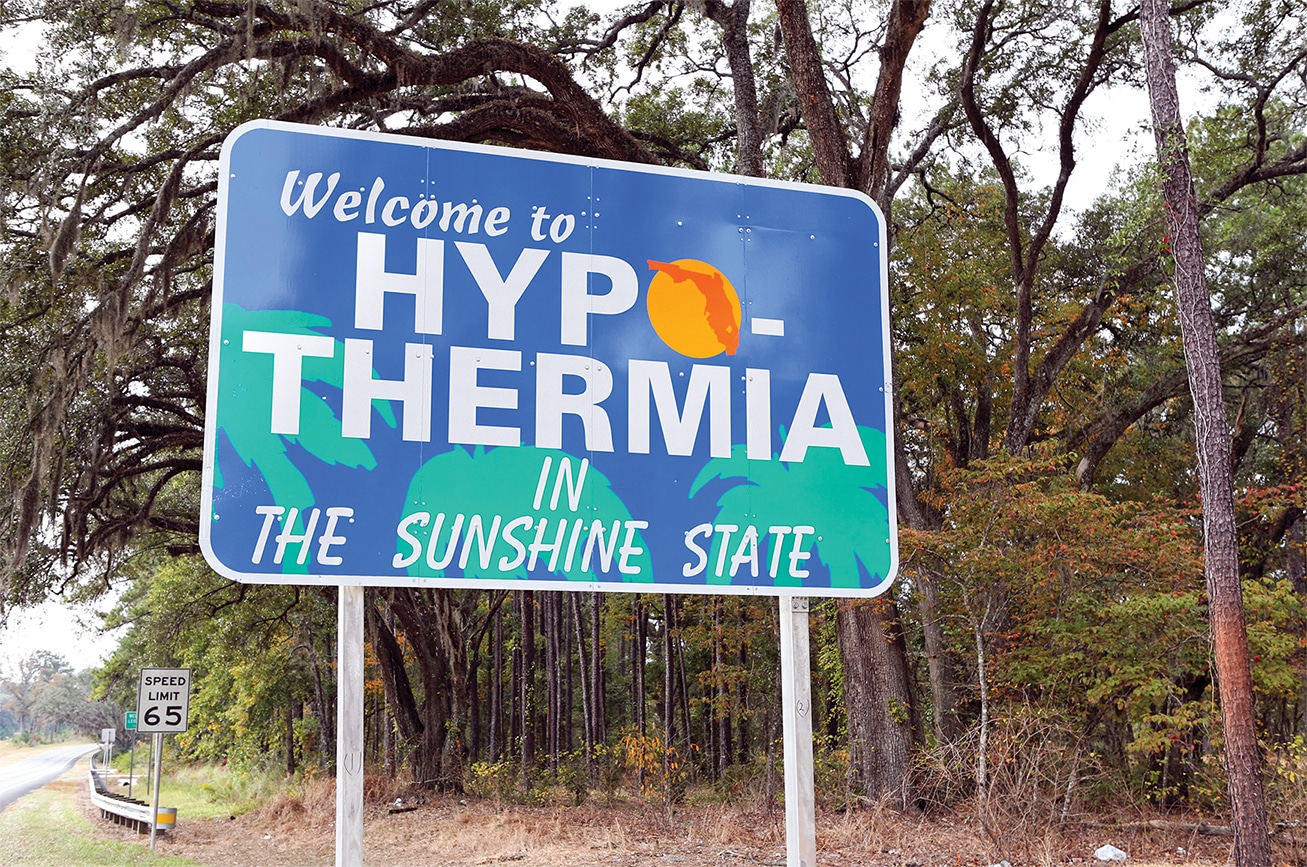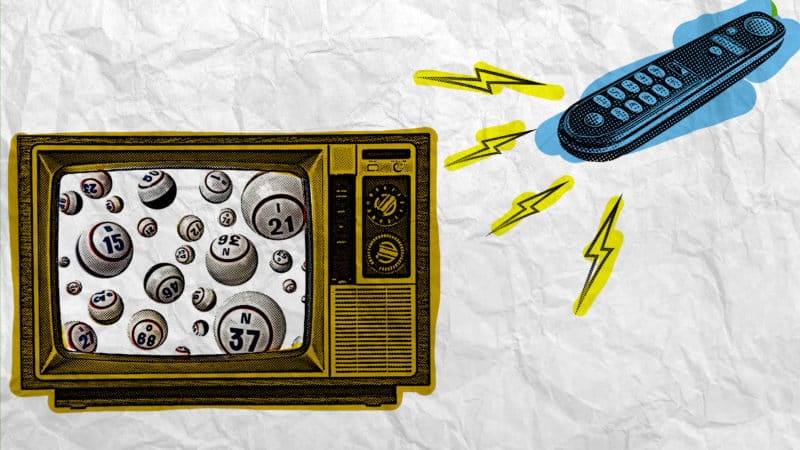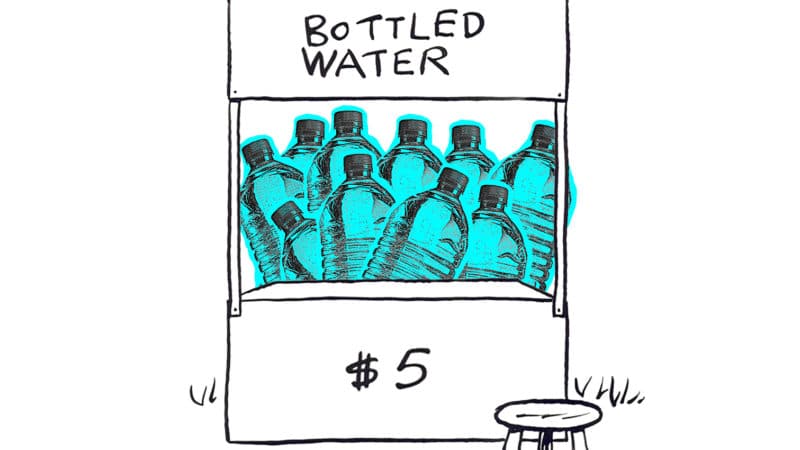Even in a state known for his warm weather, hypothermia and frostbite can affect those having to sleep outside.
By Andrew Fraieli
As an arctic cold front swept over the country, Christmas in Florida grew closer to the New England winter snowbirds ran from than the warm escape they hoped for. But snowbirds and locals alike just turned up the heat for the week. Those who have no home to escape to, or heat to turn on, had to find shelter.
For that week leading up to Christmas, temperatures dropped to 40 and below in south Florida, with Orange, Hillsborough, Pinellas, Broward and Miami-Dade counties, among others, opening emergency cold weather shelters to handle the amount of unhoused people who needed a warm place to stay. While these short-term emergency shelters help in the extreme cold, activists and medical professionals argue they take too extreme of weather to open.
Cold Enough
These emergency shelters are meant to compensate for an expected influx of people looking for shelter during this cold weather, more than normally seen and therefore requiring extra space as day-to-day shelters fill up because of it. The short-term shelters stay open overnight, putting people back outside in the morning and shutting down completely once the weather is over.
The temperature required to open these shelters vary across Florida, but often don’t open until below 40, still leading to cold weather exposure that can cause injuries.
The effects of cold weather on people experiencing homelessness are “all too familiar,” to Dr. Courtney Pladsen, she told the Homeless Voice.
Pladsen is the director of clinical and quality improvement at the National Health Care Council for the Homeless, a nonprofit organization that works with more than 300 clinics across the country training and sharing research, including in Portland, Maine where she is based.
She’s seen “trench foot,” where people step in snow and can’t dry off as they have nowhere warm and dry to go. It can cause painful blisters to develop that make it difficult to walk and can lead to infection. She’s also seen frostbite.
“I’ve had patients who have had amputations because of frostbite,” Pladsen said, “and lots who’ve had nerve damage.”
But the biggest health risk, according to Pladsen, is hypothermia.
Hypothermia is when body temperature falls below 95 F, a “severe medical emergency,” according to the NHCHC. The heart, brain, and kidneys can malfunction and lead to death.
“Malnutrition, decreased body fat, underlying infection, lack of fitness, fatigue, inadequate shelter and heat,” are all risk factors for developing hypothermia as well, she explained, and all common in those experiencing unsheltered homelessness.
The risks with the low temperature cutoffs to open emergency shelters lie in the risk of hypothermia not solely tied to outdoor ambient temperature, but also wind-chill, amount of clothing to protect, and whether that clothing is even dry.
The CDC points out that hyperthermia could set in at temperatures above 40 degrees if someone is chilled by sweat, rain or cold water, leading to the issues Pladsen has seen.
In Los Angeles, their winter shelter system opens when there’s three days of low daytime temperatures and night wind chill temperatures of freezing or below, and for certain amounts of rain. Baltimore only opens theirs if it’s below freezing, and much of the metro area of Denver requires the temperature to drop below freezing and there is moisture, or below 20 regardless.
“Even those who seek shelter — and are allowed to enter — are frequently turned back onto the streets during the day,” said the National Coalition for Homelessness’ 2010 report “Bringing Our Neighbors in from the Cold.” This leaves people to bear the brunt of the cold for an entire day once again.
In some cities, such as Miami, anti-homeless ordinances even specify using bedding, like blankets, while on the sidewalk to be illegal. So while there were 12,672 people experiencing unsheltered homelessness in Florida by the latest estimate of 2020, there were only 183 seasonal beds, according to the National Alliance to End Homelessness.
In the week of the extreme weather leading up to Christmas, Orange County announced that their downtown shelters had filled up completely, with two county-run emergency shelters taking in an additional 140 people Christmas night — more than double compared to the night before, according to the Orlando Sentinel.
The Homeless Leadership Alliance of Pinellas in Pinellas County, encompassing St. Petersburg, had more 1,100 people take advantage of their emergency cold weather shelters that week. Hillsborough County, encompassing Tampa, had nearly 800 people, according to ABC Tampa Bay.
The counties needing these emergency shelters points to not having enough shelter beds to house everyone who is living on the streets in the first place. And, their capacity shows the amount of people who clearly want to come inside from the “only” 40 degree cold — a cutoff that can still leave people outside, with the potential of hypothermia, or even pneumonia.
Even in Florida
Mary Stewart had been sleeping in a tent in the woods for two years by the time she first caught pneumonia.
She coughed up phlegm and mucus non-stop into napkins and toilet paper from a local McDonald’s. An entire week went by where she laid bundled in a coat, burning up from a fever while shivering from body chills, having no energy to eat or go out to panhandle.
After seven days, her hunger grew too painful to rest any longer. She pulled herself together and left the tent she called home in search of a can of soup from a nearby Winn Dixie. Up until then, Stewart said she survived solely on water and other liquids. The next day, she took an hour-long bus ride to the emergency room in JFK Medical Center in Lake Worth.
“[The nurses] had to put me on oxygen and rush me in for a chest x-ray,” said Stewart, who’s also written for the Homeless Voice. “They said I had pneumonia on my left lung and admitted me for an entire week.”
That was the middle of January in Palm Beach, Florida. Fourteen years, and one more bout of pneumonia, later and Stewart still sleeps in a tent outside, chronically homeless since 2005 with small patches of time being indoors.



